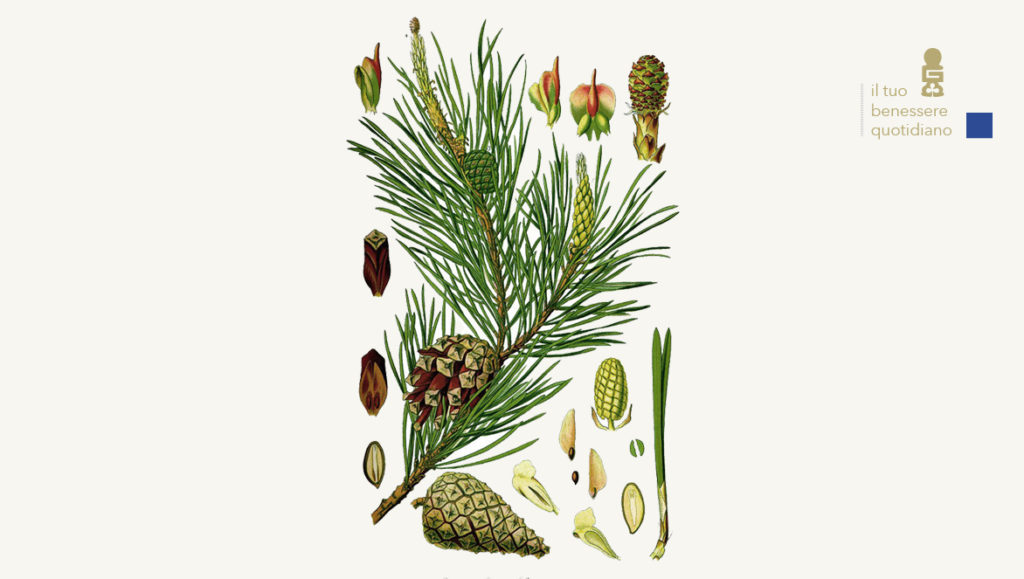Pinus montana buds
Pine is a tall, robust tree with evergreen leaves in the form of needles. Such plants are in effect an exceptional group of living things in the plant kingdom and are found in almost all terrestrial habitats. This distribution is of fundamental ecological importance as an essential component of many temperate forests. The Pinus montana variety is in flower in June and the seeds mature in October. The fragrant flowers are monoecious (individual flowers are either male or female, but both sexes can be found on the same plant) and are wind-pollinated.
Phytochemical constituents include catechin, α-pinene, α-fellandrene, β-pinene, β-sitosterol, pycnogenol, and quercetin. Pine essential oil surprisingly shows higher inhibitory activity for yeasts than cloves and thyme; its major components are terpene hydrocarbons, which, as many studies have already shown, possess high antimicrobial capacities, not only against mycetes, but also toward bacteria and viruses, proving to be one of the most active classes of plant-derived compounds in this regard. Its use in herbal medicine is as a balsamic and expectorant, indicated in diseases of the oral mucosa and respiratory disorders such as coughs, colds and flu. Externally, it is a very useful treatment for a variety of skin disorders.
BIBLIOGRAPHY
Superior Institute of Health Essential oils for human health and environmental protection. Edited by Francesca Mondello, Anna Maria Marella, Maria Grazia Bellardi, and Maura Di Vito 2015, ii, 85 p. ISTISAN Reports 15/6
